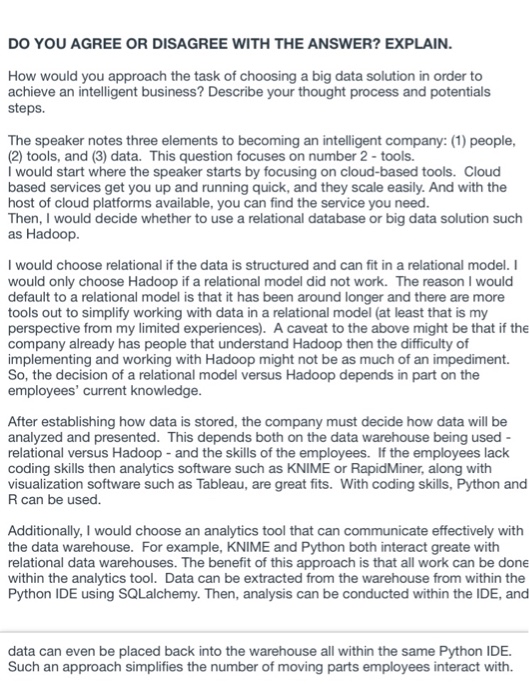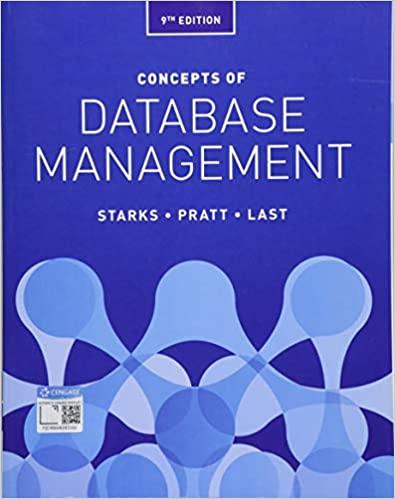DO YOU AGREE OR DISAGREE WITH THE ANSWER? EXPLAIN. How would you approach the task of choosing a big data solution in order to achieve an intelligent business? Describe your thought process and potentials steps. The speaker notes three elements to becoming an intelligent company: (1) people (2) tools, and (3) data. This question focuses on number 2 tools. I would start where the speaker starts by focusing on cloud-based tools. Cloud based services get you up and running quick, and they scale easily. And with the host of cloud platforms Then, I would decide whether to use a relational database or big data solution such as Hadoop. available, you can find the service you need. I would choose relational if the data is structured and can fit in a relational model. I would only choose Hadoop if a relational model did not work. The reason I would default to a relational model is that it has been around longer and there are more tools out to simplify working with data in a relational model (at least that is my perspective from my limited experiences). A caveat to the above might be that if the company already has people that understand Hadoop then the difficulty of implementing and working with Hadoop might not be as much of an impediment. So, the decision of a relational model versus Hadoop depends in part on the employees' current knowledge After establishing how data is stored, the company must decide how data will be analyzed and presented. This depends both on the data warehouse being used relational versus Hadoop-and the skills of the employees- lf the employees lack coding skills then analytics software such as KNIME or RapidMiner, along with visualization software such as Tableau, are great fits. With coding skills, Python and R can be used. Additionally, I would choose an analytics tool that can communicate effectively with the data warehouse. For example, KNIME and Python both interact greate with relational data warehouses. The benefit of this approach is that all work can be done within the analytics tool. Data can be extracted from the warehouse from within the Python IDE using SQLalchemy. Then, analysis can be conducted within the IDE, and data can even be placed back into the warehouse all within the same Python IDE. Such an approach simplifies the number of moving parts employees interact with







